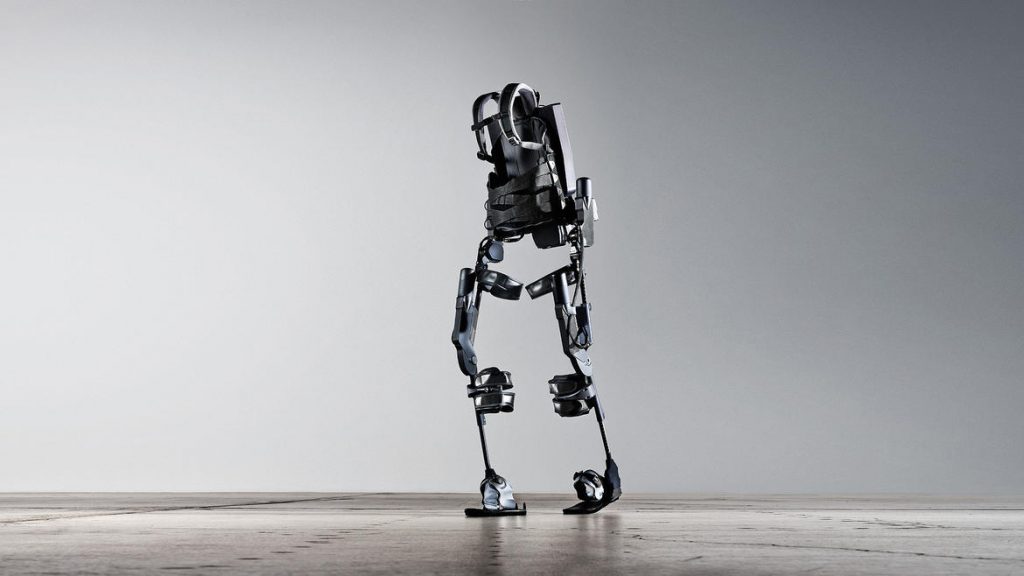Imagine a soldier on a battlefield barreling his way through enemy lines, impervious to bullets and with the ability to jump over—or through—any obstacle in his path. Or a factory worker lifting three-hundred-pound crates with little to no effort. Or a paraplegic who easily gets up from his wheelchair to walk up and shake someone’s hand. These aren’t scenes from a science-fiction movie; they’re potentially real-life scenarios made possible by wearable mobile machine technology, also known as powered exoskeletons.
There have been many innovations in this area, particularly through the integration of micro motors for exoskeletons that enable high torque and long battery life, as well as improved mobility and the ability to work under load, such as in a seated position or walking on stairs.

Designs have also improved, from the integration of lightweight—but durable—materials to form factors inspired by the human anatomy. As a result of current technological breakthroughs, there are seemingly endless applications for powered exoskeletons. Here are a few:
Medical
By definition, an exoskeleton is an outer layer of material that serves as protection for a person’s body. A powered exoskeleton effectively acts as a wearable robot. When it is attached to arms or legs, the person can enhance their movements using their own muscle power (through electro-simulation). For people who have lost use of their legs due to paralysis, a powered exoskeleton can restore movement in their limbs, which makes this technology ideal for medical use.
Along with paraplegics, senior citizens and persons with disability can also directly benefit from a lightweight powered exoskeleton, particularly if they are recovering from an injury or stroke.
Industrial
Think of Sigourney Weaver’s character in Aliens, in which she operates a power loader on a cargo dock using buttons and joysticks to control giant arms that have plier-like hands. Powered exoskeletons now make this a reality for workers in several industries, namely construction, logging, shipping, farming, mining, and automotive manufacturing, to name a few.
There should be the expected improvement to workforce productivity, i.e., having the ability to lift and move heavy objects more efficiently, as well as assemble parts with more accuracy and precision. However, there are also safety and health benefits since workers outfitted with robotic wearables may be less likely to overexert or injure themselves.
Military
Use of powered exoskeletons in combat situations is another likely application. The objective would be to enable soldiers to run faster, improve endurance, reduce fatigue, carry heavy weapons and artillery, and bypass any obstacles in their way on the battlefield. A powered exoskeleton would also simultaneously protect soldiers from gunfire and explosions.
The U.S. military reportedly began conceptualizing the use of powered exoskeleton 50 years ago—with prototypes actually developed within two decades later. Recent innovations and scientific advancements are also bringing more concepts closes to reality. Perhaps, enabling soldiers to fly is an idea that isn’t too far off, either.
Civilian
Other branches of government, as well as civilian organizations, can also implement robotics for day-to-day operations for the purpose of helping their personnel do their tasks better. These people includes firefighters, emergency medical technicians, search and rescue specialists, and more, especially in potentially hazardous and life-threatening situations.
Wide commercial use of powered exoskeletons is likely years away, with cost being the most likely prohibitive factor. Products are currently available, but on the expensive side, as prices range between $30,000 and $80,000. Wearability, i.e., comfort, may also be an issue, along with longer battery life.
Still, there is no disputing that a market for powered exoskeletons exists, whether it’s to improve workplace productivity and safety, enable recovery and rehabilitation from a debilitating injury, or create an army of “super” soldiers. Industry analyst firm ABI Research predicts the overall wearable robotics market will hit $2B worldwide by 2025.






